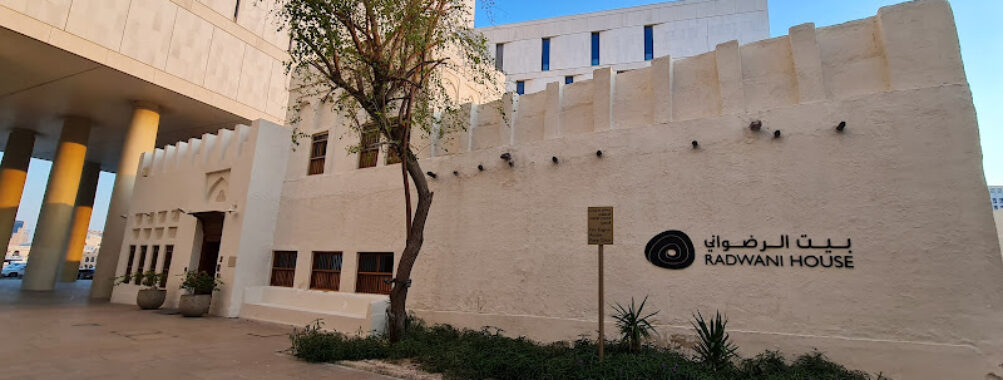
Radwani House – Msheireb Museums
Table of Contents Radwani House, one of the four heritage houses that make up the Msheireb Museums in Doha, offers an intimate look into Qatar’s transformation from a modest desert community to a modern nation. Built in the 1920s between Al-Jasrah and Msheireb—two of Doha’s oldest neighborhoods—this beautifully restored home doesn’t just preserve architecture; it preserves memory. It’s a place where the past feels tangible, where the scent of gypsum walls and the creak of wooden doors seem to whisper stories of family life long before skyscrapers dominated the skyline. Walking through the Radwani House feels like stepping into a time capsule. The rooms are arranged just as they might have been decades ago, complete with traditional furnishings, household tools, and personal artifacts that reflect everyday Qatari life. What’s particularly fascinating is how the museum showcases the changes that came with the discovery of oil and the introduction of electricity—transformations that completely reshaped domestic life. I remember the first time I visited; the contrast between the simplicity of the old kitchen and the modern appliances displayed in later rooms hit me hard. It’s like watching Qatar’s evolution unfold right before your eyes. And here’s something not everyone knows: Radwani House was the site of the first archaeological excavation in central Doha. Archaeologists uncovered pottery, utensils, and remnants that helped piece together how families lived decades ago. That alone gives this museum a layer of authenticity you can’t fake. Unlike the more polished modern museums, Radwani House feels raw and personal—like you’re walking through someone’s home, not just viewing history through glass. While most visitors leave impressed, a few might find it smaller or quieter than expected. But honestly, that’s part of its charm. It’s not about grandeur—it’s about connection. You don’t rush through Radwani House; you linger, you listen, you imagine. It’s a rare kind of museum that invites reflection rather than spectacle. One of my favorite features is the courtyard—it’s peaceful, with just enough breeze to make you forget the Doha heat for a moment. You can almost picture a family gathering there decades ago, sipping tea under the stars. It’s these small, human touches that make the place unforgettable. If you’re planning a trip, aim for the cooler months between November and March. The weather is mild, making it more pleasant to explore both the museum and the surrounding Msheireb Downtown area on foot. I once visited in July, and let me tell you, the walk from the metro felt like an endurance test under the Qatari sun. So yes—winter is your friend here. Weekday mornings tend to be quieter, which is perfect if you want to take your time without crowds. On weekends, it can get busier with families and tour groups, but that also adds a nice buzz of energy. If you enjoy photography, late afternoon light is magical—the sun hits the whitewashed walls just right, casting soft shadows that make every corner look cinematic. Radwani House is located in the heart of Msheireb Downtown Doha, which is easily accessible by public transport, taxi, or car. The Msheireb Metro Station is the most convenient option—it’s just a short walk from the museum complex. The area is well-signposted, and you’ll find shaded walkways leading directly to the entrance. If you’re driving, there’s accessible parking nearby, including designated spaces for visitors with mobility needs. Taxis and ride-hailing services like Uber and Karwa are also widely available in Doha, and drivers generally know the Msheireb Museums area well. Personally, I prefer taking the metro—it’s clean, efficient, and drops you right in the middle of the city’s cultural hub. Once you arrive, you’ll find that the Msheireb Museums complex is compact and walkable. Each of the four heritage houses—Bin Jelmood House, Company House, Mohammed Bin Jassim House, and Radwani House—is just a few minutes apart, making it easy to explore them all in one visit if you’ve got the time and energy. Here’s where a bit of insider advice can make your visit smoother and more enjoyable: One thing I always recommend: talk to the staff. Many of them are passionate about sharing stories of the house and its restoration. On my last visit, a guide explained how they used traditional cooling techniques before air conditioning—simple, ingenious methods like wind towers and thick walls that kept the interiors surprisingly cool. It’s those little details that make the experience richer. And if you’re traveling with kids, don’t worry—they’ll find it engaging too. The interactive displays and open spaces make it easy for them to explore safely. Plus, it’s a great opportunity to show them how life used to be before smartphones and screens took over. All in all, Radwani House is more than just a museum—it’s a bridge between generations. It tells the story of a Qatar that’s both old and new, humble and ambitious. Whether you’re a history buff, a culture seeker, or just curious about how people lived before the oil boom, this place will leave an impression. Every wall, every artifact, every quiet corner has a story to tell. And if you listen closely, you might just hear the echoes of a Doha that once was.Description
Key Features
Best Time to Visit
How to Get There
Tips for Visiting
Location
Places to Stay Near Radwani House - Msheireb Museums
Find and Book a Tour
Explore More Travel Guides
No reviews found! Be the first to review!